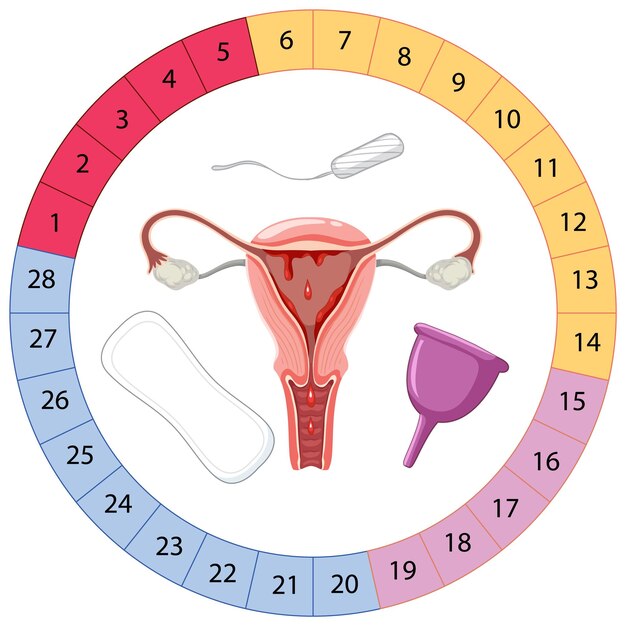
DPO, or “days past ovulation,” is an important time frame for couples who are trying to conceive. It can be nerve-wracking because the symptoms during DPO often feel very similar to premenstrual symptoms. However, if you know how to identify the unique signs, you might be able to spot the first hints of pregnancy even before a home test provides conclusive results.
Ovulation happens when an egg is released from the ovary and moves through the fallopian tubes, waiting to meet sperm for fertilization. For couples trying to conceive, this is the key window of opportunity. If fertilization occurs, the next step is implantation—when the fertilized egg attaches to the uterine lining.
Every woman’s experience of early pregnancy symptoms during DPO is different. Even for the same woman, the symptoms can vary from one pregnancy to another. These early signs, such as muscle aches, headaches, and changes in appetite, can also overlap with other health issues, which makes it tricky to pinpoint pregnancy right away.
In the early days of DPO, pregnancy hormone levels are typically not high enough to produce definitive results on a home pregnancy test, which measures hCG (human chorionic gonadotropin) in urine. But for those who can’t wait to find out, certain subtle symptoms might offer clues. Here’s a breakdown of common symptoms across the DPO timeline:
### Days 0–7 Past Ovulation
This is the beginning of the luteal phase, which occurs after ovulation and lasts until your period starts (unless you’re pregnant). At this stage, most women don’t notice any pregnancy symptoms because implantation hasn’t yet occurred. It takes 6 to 12 days for a fertilized egg to implant in the uterine lining. During this time, progesterone levels peak, which can cause mood changes and physical symptoms similar to PMS, such as:
– Bloating
– Headaches or muscle aches
– Increased nipple sensitivity
– Breast tenderness
– Food cravings or aversions
– Heightened sensitivity to smells
It’s worth noting that even if pregnancy hasn’t occurred, high progesterone levels during this phase might still cause these symptoms.
### Days 7–10 Past Ovulation
If fertilization has occurred, implantation happens during this time. Around one-third of women experiencing pregnancy may notice light spotting or bleeding, known as implantation bleeding. This bleeding is typically very light and lasts just one or two days. However, it’s easy to miss this sign because it’s so subtle.
At this point, your body begins to produce hCG, the pregnancy hormone. However, it’s still too early for most home pregnancy tests to detect it. Other possible symptoms include increased fatigue, mild cramps, and more noticeable tenderness in the breasts.
In rare cases, spotting at this stage could signal an early miscarriage (chemical pregnancy) or be caused by other factors. It’s important to monitor your body and follow up with a doctor if needed.
### Days 11–14 Past Ovulation
By now, the hCG levels in your body may rise enough to be detected by home tests. Symptoms often intensify, and they might feel similar to PMS:
– Persistent fatigue
– Hunger changes or unusual cravings
– Darkening of the nipple area
– Frequent urination
– Bloating and gas
– Diarrhea or other digestive changes
– Lower abdominal cramping
At this point, some women can easily differentiate between early pregnancy signs and premenstrual symptoms, especially if they’re familiar with how their body feels before a period.
### When to Take a Pregnancy Test
If your period is more than nine days late, it’s a good time to take a home pregnancy test. However, testing too early can lead to a false negative result because hCG levels may not yet be high enough to detect. For the most reliable results, wait until at least a day or two after your missed period.
If you do test early and get a negative result, but still suspect you’re pregnant, wait a few more days and test again. For those who need answers sooner, a blood test is a more sensitive option because it can detect even small amounts of hCG.
### Frequently Asked Questions (FAQs)
**What if I have negative test results but I’m still experiencing pregnancy symptoms?**
Sometimes, early tests come back negative because hCG levels aren’t yet detectable. If your period hasn’t started and you continue to notice symptoms, wait a few days and test again. Alternatively, consult with a healthcare professional to discuss your concerns and explore other diagnostic options.
**When should I expect a positive home pregnancy test?**
On average, most positive results show up around 10 DPO. However, testing too early increases the risk of a false negative result. Waiting until after your missed period often provides more accurate results.
**Can a home pregnancy test give a false-positive result?**
False positives are rare but can happen if you’re taking fertility medications containing hCG or if there’s been an early miscarriage. It’s also possible to get inaccurate results from user error, so carefully follow the instructions on the test.
**What symptoms can I expect at 5 DPO?**
At 5 DPO, it’s too early for most women to know if they’re pregnant. Subtle symptoms, like mild cramps or mood swings, might occur, but they’re not conclusive. By 15 DPO, a missed period usually confirms pregnancy, and at this point, home tests are very accurate.
In summary, DPO symptoms are something many women closely watch, especially when hoping for a positive pregnancy result. While certain signs can offer clues, they’re not definitive, and it’s possible for women to experience no symptoms at all during the early stages of pregnancy. Patience and careful testing are key to getting accurate answers.